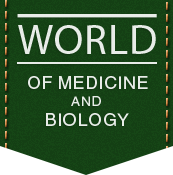Article
IMPROVED METHODS OF LONG-TERM STORAGE OF MICROORGANISMS OF THE GENUS CLOSTRIDIUM
| About the author: | Brych O.I., Synetar E.A., Chernenko V.J. |
| Heading | EXPERIMENTAL MEDICINE |
| Type of article | Scentific article |
| Annotation | Introduction. Long-term storage of different species of spore-forming anaerobic microorganisms while preserving their original characteristics is of practical importance in the manufacture of immunological products and is an actual problem in maintaining the collection of samples of crops in the depositories. Thus, when cultured vaccine strains genus Clostridium, in most cases the task of obtaining not only biomass but also a large number of active product biosynthesis - toxin, which guarantees a full immune response. Lyophilization as an effective way of storing museum cultures of anaerobic bacteria unchanged (over 30 years) can not always be used due to the lack of special equipment in microbiological laboratories of medical institutions and research institutions. Therefore, the development of new methods of storing museum strains in terms of diagnostic laboratories and research institutions is essential. Objective: to improve the method of stacking museum strains of anaerobic microorganisms genus Clostridium and test their viability in the long-term storage. Methods: The study was conducted with the use of microscopic, bacteriological and biochemical methods. Results: Checking the growth properties of experimental models of museum strains of anaerobic microorganisms with industrial and diagnostic value of Clostridium acetobutylicum 524, C. acetobutylicum 780, C.perfringens 27, C. novyi 198, C.sporogenes 275 in 3, 6, 9, 12 and 15 months kept in encapsulated form at -70 ° C showed high viability of all investigated strains. Intensive crop growth in anaerobic environments tyohlykoleve observed on the second day. For biochemical properties that are studied in their ability to ferment glucose, sucrose, maltose, galactose, mannitol, salicin used in experimental work strains were typical. Daily subcutaneous injection of C. novyi 198 culture and C. perfringens 27 white mice at a dose of 0.2 ml caused the death of animals after 20 hours. Conclusion. The technology in the preparation of encapsulated samples museum reference strains of anaerobic microorganisms genus Clostridium, which are diagnostic and industrial importance was offered. The high viability with preserved original biological properties of reference cultures of anaerobic bacteria in the long-term storage established . Proved promising application of the proposed method sample making museum reference strains of anaerobic organisms with a view to long-term storage of cultures in microbiological laboratories. |
| Tags | anaerobic bacteria, storage, viability |
| Bibliography |
|
| Publication of the article | «World of Medicine and Biology» №4(53) 1 part 2015 year, 101-103 pages, index UDK 579.852.1.001.76.8.004.4 405 |
